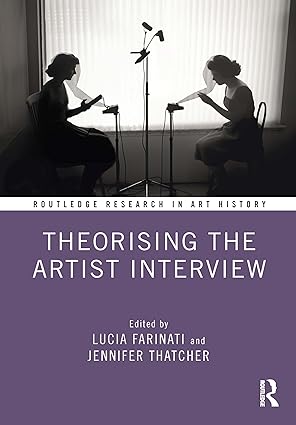As an undergraduate, I was exhorted to eschew intentional idioms and, forty years later, I am still admonished for my “unscientific” language by anonymous reviewers who believe devoutly that such language should be suppressed. The moral tone in these criticisms suggests something important is at stake. Nobel Prize winners in the audience roll their eyes when I give public lectures. I am told that my choice of words expresses everything that is “soft” and unscientific about adaptationism as compared to the “hard” and rigorous sciences (rigor is stiffness in Latin). But when you listen closely to my critics, their own language abounds with reference to codes, signals, messages, and the like. When challenged, these tough-minded empiricists insist that these terms have strict physical meanings that do not invoke purposes. Most would reject, as absurd, a claim that they were using metaphor. If it were only about words, I would have had better things to do than write this book, and you would probably have better things to do than read it. I do not mean to disparage words. Spoken and written language are the expression of deep inner structures. The language that is censored says something about the values and fears of the censor. This book pays close attention to the meanings of words for four main reasons. The first is that languages evolve and provide useful analogies for thinking about genetic evolution. For example, the original reasons for particular turns of phrase can be forgotten, e.g., exempli gratia. The second is that meaning is the outcome of a process of interpretation and is specific to each interpreter. The same words will be interpreted differently and mean different things for each reader. As a result, many acrimonious disputes in the philosophy of biology are really quibbling about definitions rather than disputes about facts. The third is that the origin of language marked an extraordinary expansion in the lexical expressivity of the flux of meaning. The fourth, and most important, is that the beauty and diversity of language, like the beauty and diversity of the natural world, are wonders to behold. Over the years I have come to believe that many promising approaches in biology, some of agronomic or medical significance, are not pursued because they violate the philosophical presumptions of working biologists who are unaware of their own presumptions. Good ideas are rejected for bad reasons. The money that goes into publicly funded research could be better spent. I see the denial of a naturalized teleology—a teleology grounded in the powerful metaphor of natural selection—as one of these self- defeating presumptions. It is a refusal to acknowledge the obvious, that organisms do things for good reasons. The admonition that teleology has no place in science can be traced to the seventeenth century and the rejection of final causes as useful explanatory principles at the beginning of the Scientific Revolution. Final causes were one of the four categories of Aristotelian causes that had been a mainstay of medieval philosophy. In very rough terms, the material cause was the stuff out of which a thing was made; the formal cause was that which made of this stuff one kind of thing rather than another; the efficient cause was that which set a thing in motion; and the final cause was the purpose or end (telos), that for the sake of which the thing existed. The new materialist philosophy embraced material and efficient causes (matter in motion) but rejected final causes and had an ambivalent relation to formal causes. Lurking in the background was a separation of facts from values. An important scientific value was that facts were more important than values (irony intended), but if we were true scientists we should want to understand the origins of values and meanings. The main task of this book is to explain how a physical world of matter in motion, of material and efficient causes, gave rise to a living world of purpose and meaning, of final and formal causes. I will briefly sketch the book’s arguments so that you have some sense where it is heading. The key development in the history of life was the origin of writing, of materials that were copied and had effects in the world that directly or indirectly influenced a copy’s chance of being copied. These genetic materials do not create new matter from the void but rearrange existing matter to match a model. The successive copies are material things, not incorporeal ideas, but lineages of material genes preserve structure despite perpetual change in molecular substance. What is “communicated” from model to copy? One may call it information or simply form. Genetic materials can be considered formal causes. Aristotle would have said that the formal cause of our being human is that which makes of our material cause a human being. Human, chimpanzee, and slug bodies are built of the same materials but have different forms. Our bodies are more similar to the bodies of chimpanzees than to the bodies of slugs because we share more evolutionary history with chimpanzees than with slugs (one might say our formal causes are more similar). But copying alone does not get us anywhere: garbage in, garbage out. We want to feed in garbage at one end and obtain something useful at the other end (an egg perhaps). Let’s speak of eggs. Spinoza expressed a commonsense objection to final causes: the “doctrine of Final Causes turns Nature completely upside down, for it regards as an effect that which is in fact a cause, and vice versa. . . . It makes that which is by nature first to be last” (2002, 240). Common sense tells us that causes cannot come after their effects and a final cause appears to explain an earlier something by a later something, the goal the earlier something is intended to achieve. But common sense extrapolates an uncontroversial property of causes of particular events to a problematic restriction on causes of types of events. My favorite example, which will recur as a leitmotif throughout this volume, concerns chickens and eggs. It is unproblematic to ask whether this particular chicken was a cause of this particular egg. If the egg developed into the chicken, then the egg is a cause of the chicken. If the chicken laid the egg, then the chicken is a cause of the egg. But the question becomes problematic when we ask how generic chickens are causally related to generic eggs, because chickens then occur both before and after eggs. Eggs exist for the sake of becoming chickens and chickens for the sake of laying eggs. Final causes emerge from replicative recursion by the process we call natural selection. Genes and their effects are like eggs and chickens. A gene’s effects have a causal role in determining which genes are copied. A gene (considered as a lineage of material copies) persists if its lineage has been consistently associated with survival and reproduction. If possession of a gene is consistently associated with survival and reproduction then one can infer that the gene’s effects have causally contributed to the gene’s persistence. (A gene does not achieve anything except in the context of other genes and environmental inputs during a single life but, over the course of many generations, each gene is shuffled onto random backgrounds of other genes and this randomization allows natural selection to “infer” causation from correlation.) If past effects that have contributed to a gene’s persistence are recapitulated as effects of a current gene, then these effects exist for the sake of their cause and can be considered the gene’s raison d’être (or final cause). As a consequence of differential replication of alternatives, successful genes accumulate information about what has worked in the past. This information comes from the environment that selects. From this perspective, natural selection can be viewed as inductive reasoning about effective action: a gene’s effects are hypotheses about what works in the world, with confidence in a hypothesis increasing with the strength of past associations with favorable outcomes. But there is no guarantee that the world will not change. As David Hume wrote about inductive reasoning: “All inferences from experience suppose, as their foundation, that the future will resemble the past, and that similar powers will be conjoined with similar sensible qualities. If there be any suspicion that the course of nature may change, and that the past may be no rule for the future, all experience becomes useless, and can give rise to no inference or conclusion” (1748/2004, 22). What worked in the past need not work in the present because the world may have changed. But surely, some will argue, evolutionary intentionality is ersatz intentionality, a metaphor, not the real thing. Only beings like us have real intentions because only we can foresee the future. But we cannot know the future. There is no backward causation. Our intentions are anticipated outcomes. When I act with intention, I have an outcome in mind. My deliberation is past and my plan may misfire. The unintended products of natural selection can likewise be considered agents whose bodies and instinctive behaviors “anticipate” that what has worked in the past will work in the future.
چکیده فارسی
بهعنوان دانشجوی کارشناسی، از من خواسته شد که از اصطلاحات عمدی اجتناب کنم و چهل سال بعد، هنوز به دلیل زبان «غیرعلمی» من توسط منتقدان ناشناس که معتقدند چنین زبانی باید سرکوب شود، توصیه میکنم. لحن اخلاقی در این انتقادات نشان می دهد که موضوع مهمی در خطر است. برندگان جایزه نوبل در میان تماشاگران وقتی سخنرانی عمومی می کنم، چشمان خود را می چرخانند. به من گفته می شود که انتخاب کلمات من بیانگر هر چیزی است که در مورد سازگاری گرایی «نرم» و غیرعلمی است در مقایسه با علوم «سخت» و سخت (سختی در لاتین سختی است). اما وقتی به منتقدان من از نزدیک گوش میدهید، زبان خودشان با ارجاع به رمزها، سیگنالها، پیامها و مواردی از این قبیل فراوان است. این تجربهگرایان سرسخت وقتی به چالش کشیده میشوند، اصرار دارند که این اصطلاحات دارای معانی فیزیکی سختگیرانهای هستند که اهدافی را دنبال نمیکنند. اکثر آنها ادعایی را که در آن از استعاره استفاده می کنند، به عنوان پوچ رد می کنند. اگر فقط در مورد کلمات بود، من کارهای بهتری نسبت به نوشتن این کتاب داشتم و شما احتمالاً کارهای بهتری نسبت به خواندن آن داشتید. قصدم تحقیر کلمات نیست. زبان گفتاری و نوشتاری بیان ساختارهای عمیق درونی است. زبانی که سانسور می شود چیزی در مورد ارزش ها و ترس های سانسورکننده می گوید. این کتاب به چهار دلیل عمده به معانی کلمات توجه دارد. اولین مورد این است که زبان ها تکامل می یابند و قیاس های مفیدی برای تفکر در مورد تکامل ژنتیکی ارائه می دهند. به عنوان مثال، دلایل اصلی برای چرخش های خاص عبارت را می توان فراموش کرد، به عنوان مثال، eempli gratia. دوم این که معنا نتیجه یک فرآیند تفسیر است و مختص هر مفسر است. لغات یکسان به گونهای متفاوت تفسیر میشوند و برای هر خواننده معنای متفاوتی دارند. در نتیجه، بسیاری از مناقشات تند در فلسفه زیست شناسی واقعاً در مورد تعاریف بحث می کنند تا بحث در مورد حقایق. سوم این است که منشأ زبان گسترش فوقالعادهای را در بیان واژگانی جریان معنا نشان میدهد. چهارمین و مهم ترین آن این است که زیبایی و تنوع زبان، مانند زیبایی و تنوع جهان طبیعی، شگفت انگیز است. در طول سالها به این باور رسیدهام که بسیاری از رویکردهای امیدوارکننده در زیستشناسی، برخی از اهمیت زراعی یا پزشکی، دنبال نمیشوند، زیرا آنها پیشفرضهای فلسفی زیستشناسان فعال را که از پیشفرضهای خود بیخبر هستند، نقض میکنند. ایده های خوب به دلایل بد رد می شوند. پولی که صرف تحقیقات با بودجه عمومی می شود می تواند بهتر خرج شود. من انکار غایت شناسی طبیعی شده - غایت شناسی مبتنی بر استعاره قدرتمند انتخاب طبیعی - را به عنوان یکی از این پیش فرض های خودشکسته می بینم. این یک امتناع از اذعان به امر بدیهی است که ارگانیسم ها کارها را به دلایل خوبی انجام می دهند. این توصیه که غایت شناسی جایی در علم ندارد را می توان در قرن هفدهم و رد علل نهایی به عنوان اصول مفید توضیحی در آغاز انقلاب علمی جستجو کرد. علل نهایی یکی از چهار دسته علل ارسطویی بود که پایه اصلی فلسفه قرون وسطی بود. به بیانی بسیار تقریبی، علت مادی چیزهایی بود که یک چیز از آن ساخته شد. علت صوری آن چیزی بود که از این چیزها یک نوع چیز را به جای دیگری ایجاد می کرد. علت مؤثر آن چیزی بود که چیزی را به حرکت در آورد. و علت نهایی هدف یا غایت (telos) بود که به خاطر آن چیز وجود داشت. فلسفه ماتریالیستی جدید علل مادی و کارآمد (ماده در حرکت) را پذیرفت، اما علل نهایی را رد کرد و با علل صوری رابطه ای دوسوگرا داشت. در پس زمینه جدایی واقعیت ها از ارزش ها پنهان شده بود. یک ارزش علمی مهم این بود که حقایق مهمتر از ارزشها بودند (طنز مورد نظر)، اما اگر ما دانشمندان واقعی بودیم باید بخواهیم ریشه ارزشها و معانی را بفهمیم. وظیفه اصلی این کتاب این است که توضیح دهد که چگونه یک جهان فیزیکی از ماده در حرکت، از علل مادی و کارآمد، یک جهان زنده با هدف و معنا، از علل نهایی و صوری را به وجود آورد. من به طور خلاصه استدلال های کتاب را ترسیم می کنم تا شما متوجه شوید که به کجا می رود. تحول کلیدی در تاریخ زندگی، منشأ نوشتن، مطالبی بود که کپی میشدند و تأثیراتی در جهان داشتند که به طور مستقیم یا غیرمستقیم بر شانس نسخهبرداری تأثیر میگذاشتند. این مواد ژنتیکی ماده جدیدی از فضای خالی ایجاد نمیکنند، بلکه مواد موجود را برای مطابقت با یک مدل بازآرایی میکنند. کپیهای متوالی چیزهای مادی هستند، نه ایدههای غیرجسمانی، اما دودمان ژنهای مادی ساختار را با وجود تغییر دائمی در ماده مولکولی حفظ میکنند. چه چیزی از مدل به کپی "ارتباط" می شود؟ می توان آن را اطلاعات یا به سادگی فرم نامید. مواد ژنتیکی را می توان علل رسمی در نظر گرفت. ارسطو می گفت علت صوری انسان بودن ما چیزی است که از علت مادی ما انسان می سازد. بدن انسان، شامپانزه و حلزون از مواد مشابهی ساخته شدهاند اما شکلهای متفاوتی دارند. بدن ما بیشتر به بدن شامپانزه ها شباهت دارد تا بدن راب ها، زیرا ما تاریخچه تکاملی بیشتری را با شامپانزه ها به اشتراک می گذاریم تا با راب ها (شاید بتوان گفت علل رسمی ما شبیه تر است). اما کپی کردن به تنهایی ما را به جایی نمی رساند: زباله به داخل، زباله بیرون. ما می خواهیم در یک طرف زباله ها را تغذیه کنیم و در انتهای دیگر چیزی مفید به دست آوریم (شاید یک تخم مرغ). بیایید از تخم مرغ صحبت کنیم. اسپینوزا یک اعتراض عامیانه به علل نهایی بیان کرد: «آموزه علل نهایی طبیعت را کاملاً وارونه می کند، زیرا آن را به عنوان یک معلول در نظر می گیرد که در واقع یک علت است، و بالعکس. . . . آن چیزی را که ذاتاً اول است آخرین می کند» (2002، 240). عقل سلیم به ما می گوید که علل نمی توانند پس از تأثیرات خود بیایند و به نظر می رسد که یک علت نهایی یک چیز قبلی را با چیزی متأخر توضیح می دهد، هدفی که چیزی زودتر به آن می رسد. اما عقل سلیم یک ویژگی غیر مناقشهبرانگیز علل رویدادهای خاص را به یک محدودیت مشکلساز در علل انواع رویدادها تعمیم میدهد. مثال مورد علاقه من، که به عنوان یک لایت موتیف در سراسر این جلد تکرار می شود، مربوط به مرغ و تخم مرغ است. بدون مشکل است که بپرسیم آیا این مرغ خاص علت این تخم مرغ خاص بوده است. اگر تخم مرغ به مرغ تبدیل شد، آنگاه تخم مرغ عامل ایجاد مرغ است. اگر مرغ تخم گذاشت، پس مرغ عامل تخم است. اما این سوال زمانی مشکلساز میشود که بپرسیم مرغهای ژنریک چگونه با تخمهای ژنریک مرتبط هستند، زیرا مرغها هم قبل و هم بعد از تخممرغ اتفاق میافتند. تخم ها به خاطر جوجه شدن و جوجه ها به خاطر تخم گذاری وجود دارند. علل نهایی از بازگشت تکراری توسط فرآیندی که انتخاب طبیعی می نامیم پدیدار می شوند. ژن ها و اثرات آنها مانند تخم مرغ و مرغ است. اثرات یک ژن در تعیین اینکه کدام ژن کپی می شود، نقش علّی دارد. یک ژن (که بهعنوان دودمان کپیهای مادی در نظر گرفته میشود) در صورتی باقی میماند که نسب آن به طور مداوم با بقا و تولید مثل مرتبط باشد. اگر داشتن یک ژن به طور مداوم با بقا و تولیدمثل مرتبط باشد، می توان استنباط کرد که اثرات ژن به طور علّی در تداوم ژن نقش داشته است. (یک ژن در طول یک زندگی مجرد به چیزی جز در زمینه ژنهای دیگر و ورودیهای محیطی دست نمییابد، اما در طول چندین نسل، هر ژن در پسزمینههای تصادفی ژنهای دیگر جابجا میشود و این تصادفیسازی به انتخاب طبیعی اجازه «استنتاج» میدهد. علّت از همبستگی.) اگر اثرات گذشته ای که در تداوم یک ژن نقش داشته اند به عنوان اثرات یک ژن فعلی خلاصه شوند، آنگاه این تأثیرات به خاطر علت خود وجود دارند و می توانند دلیل وجودی (یا علت نهایی) ژن در نظر گرفته شوند. در نتیجه تکثیر افتراقی جایگزینها، ژنهای موفق اطلاعاتی را در مورد آنچه در گذشته کار کرده است جمعآوری میکنند. این اطلاعات از محیطی می آید که انتخاب می کند. از این منظر، انتخاب طبیعی را می توان به عنوان استدلال استقرایی در مورد کنش مؤثر در نظر گرفت: تأثیرات یک ژن فرضیه هایی در مورد آنچه در جهان کار می کند، با اطمینان به یک فرضیه با قدرت ارتباط های گذشته با نتایج مطلوب افزایش می یابد. اما هیچ تضمینی وجود ندارد که جهان تغییر نکند. همانطور که دیوید هیوم در مورد استدلال استقرایی می نویسد: «همه استنتاج های حاصل از تجربه، به عنوان پایه و اساس آنها، فرض می کنند که آینده شبیه گذشته خواهد بود، و قدرت های مشابه با ویژگی های معقول مشابهی همراه خواهند بود. اگر این ظن وجود داشته باشد که مسیر طبیعت ممکن است تغییر کند، و گذشته ممکن است هیچ قانونی برای آینده نباشد، همه تجربه ها بی فایده می شوند و نمی توانند نتیجه یا استنتاجی ایجاد کنند.» (1748/2004، 22). آنچه در گذشته کار می کرد نیازی به کار در زمان حال ندارد زیرا ممکن است جهان تغییر کرده باشد. اما مطمئناً، برخی استدلال خواهند کرد، نیت تکاملی نیت ersatz است، یک استعاره، نه چیز واقعی. فقط موجوداتی مثل ما نیت واقعی دارند زیرا فقط ما می توانیم آینده را پیش بینی کنیم. اما ما نمی توانیم آینده را بدانیم. هیچ علت عقب مانده ای وجود ندارد. نیت ما نتایج پیش بینی شده است. وقتی با نیت عمل می کنم، نتیجه ای در ذهن دارم. رایزنی من گذشته است و ممکن است برنامه من اشتباه شود. محصولات ناخواسته انتخاب طبیعی را نیز میتوان عواملی در نظر گرفت که بدن و رفتارهای غریزی آنها «پیشبینی» میکند که آنچه در گذشته مؤثر بوده، در آینده نیز مؤثر خواهد بود.
ادامه ...
بستن ...
© 2020 David Haig
All rights reserved. No part of this book may be reproduced in any form by any
electronic or mechanical means (including photocopying, recording, or
information storage and retrieval) without permission in writing from the
publisher.
This book was set in ITC Stone Serif Std and ITC Stone Sans Std by Toppan
Best-set Premedia Limited.
Library of Congress Cataloging-in-Publication Data
Names: Haig, David, 1958– author.
Title: From Darwin to Derrida : selfish genes, social selves, and the
meanings of life / David Haig ; foreword by Daniel C. Dennett.
Identifiers: LCCN 2019028387 | ISBN 9780262043786 (hardcover) |
ISBN 9780262358026 (ebook)
Subjects: LCSH: Natural selection—History.
Classification: LCC QH375 .H35 2020 | DDC 576.8/2—dc23
LC record available at https://lccn.loc.gov/2019028387
10 9 8 7 6 5 4 3 2 1
ادامه ...
بستن ...










